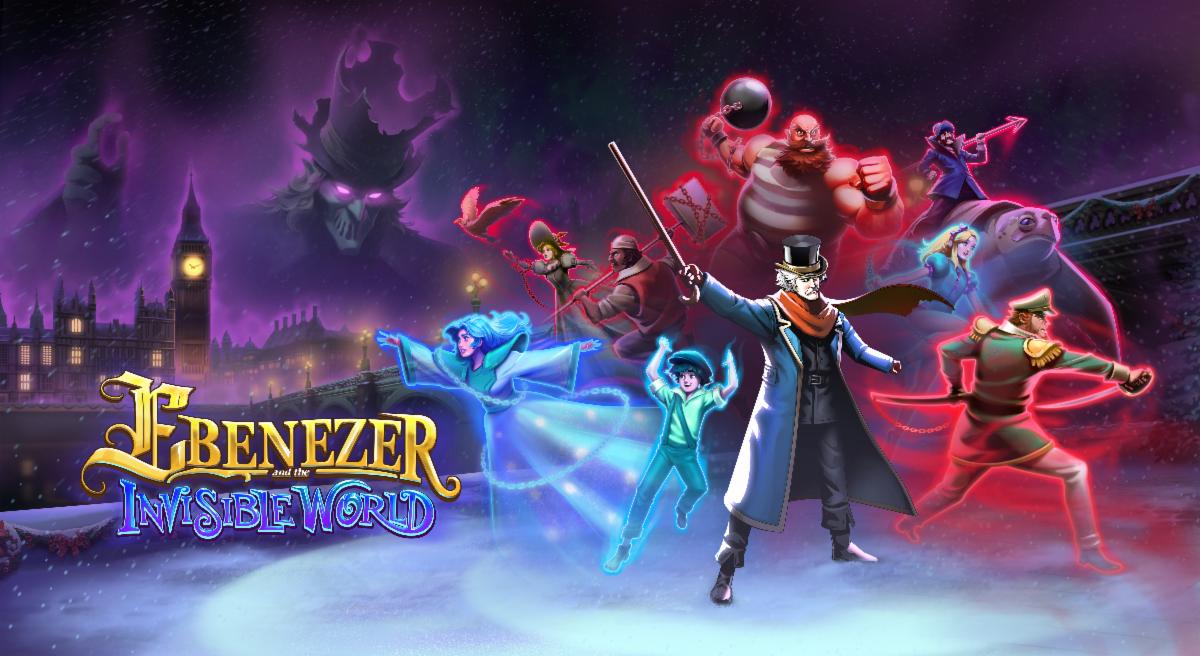A Christmas Carol is not the first story that comes to mind when it comes to video games. Even then, if a video game were to be made, you would think an adventure game would fit best, but Ebenezer and the Invisible World does something different and it is a bit of a mixed bag. What we have here is A Christmas Carol meets Castlevania, and while the premise had a surprising amount of potential, the execution fails to pull it off successfully.
In Ebenezer and the Invisible World, Ebenezer Scrooge has already gone through the events of the classic story and is now being called upon by friendly ghosts to help save the commonfolk from an evil industrialist, and heir to the Malthus family. The game tries to draw on the historical Thomas Malthus here, although it seems to misunderstand Malthusianism as a concept and how the Industrial Revolution and later innovations in technology would rapidly disprove many Malthusian theories, and by the 1960s, most Malthusian concepts would be fully rendered pointless due to advances in capitalism creating a better standard of living for most. Still, the game needs its villain and the idea of a man who rejected redemption from the three spirits is an interesting one, even if the story is a bit obvious and easy to figure out.

Gameplay consists of taking control of Ebenezer who initially uses his cane to attack, and must fight the forces of the Malthus family and unrepentant ghosts. It should be noted that the controls are a bit cumbersome and stiff, and it is far too easy to get hit and some careful dodging is required. This creates a bit of a learning curve that may not be welcome to players of modern Metroidvanias but will be familiar more to players of classic games, albeit not for the right reasons.
Some enemies are positioned in places that are impossible to hit without taking damage, and the challenge ends up feeling a bit artificial. Luckily Scrooge is not alone on his quest as friendly ghosts will aid him along the way, granting him new abilities and attacks and enabling more exploration like any good Metroidvania. Some ghosts will perform action moves that will drain your meter and require standard attacks to recharge, while others are environmental and do not require a meter to use.

There is also an option to collect materials that will upgrade your abilities and empower the ghosts, but it feels a bit half-baked. Combat in general feels a bit unpolished and outdated and not in the sense of being a throwback title, which ends up creating a bit of disappointment. Luckily there is more to do, such as side quests for the townspeople, and these are a bit simple but do help expand the game a bit and break up the monotony.
However, we also need to discuss the big issue with the game which is the way save rooms are handled. Ebenezer and the Invisible World tends to feel like an older game and this is one such example of it being done in a not great way. Checkpoints are few and far between and dying in the game will result in large sections needing to be redone, quests re-completed, and dialogue and cutscenes endured again. It would not be an issue if the save system was a bit more generous, but this is an issue that holds Ebenezer and the Invisible World back.

One area where Ebenezer and the Invisible World shines is its beautiful visuals. Everything has a gorgeous hand-drawn look that is full of detail and skillfully designed, from the town’s backdrop to the little details of townspeople walking around in the background, everything shines. The audio is also great here and fits the theme perfectly, showing that the developers really went all out in terms of the audio and visual departments.
Ebenezer and the Invisible World has a lot of fun ideas and concepts but is not super fun to play. The combat is tedious and lacklustre, and when playing in handheld mode on Switch, some text can be very hard to read. This is a great-looking game, but just does not play well as a Metroidvania.
Disclaimer: A review key was provided

